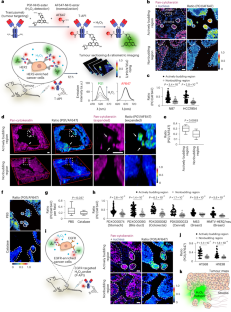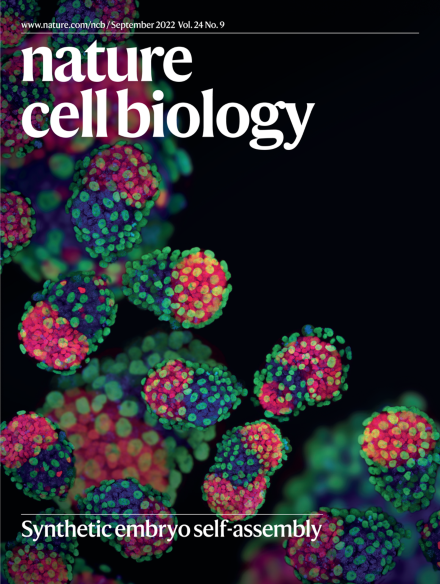Intratumour oxidative hotspots provide a niche for cancer cell dissemination
IF 17.3
1区 生物学
Q1 CELL BIOLOGY
引用次数: 0
Abstract
Intratumour heterogeneity represents the hierarchical integration of genetic, phenotypic and microenvironmental heterogeneity. Although single-cell sequencing has clarified genetic and phenotypic variability, the heterogeneity of nongenetic, microenvironmental factors remains elusive. Here, we developed T-AP1, a tumour-targeted probe tracking extracellular H2O2, which allows the visualization and characterization of tumour cells exposed to oxidative stress, a hallmark of cancer. T-AP1 identified actively budding intratumour regions as H2O2-rich microenvironments (H2O2 hotspots), which were primarily established by neutrophils. Mechanistically, tumour cells exposed to H2O2 underwent partial epithelial–mesenchymal transition through p38–MYC axis activation and migrated away from H2O2 hotspots. This escape mechanism was absent in normal epithelial cells but prevalent in most cancers except NRF2-hyperactivated tumours, which exhibited abrogated p38 responses and enhanced antioxidant programmes, thus revealing an intrinsic stress defence programme in cancers. Together, T-AP1 enabled the identification of H2O2 hotspots that provide a niche for cancer cell dissemination, offering insights into metastasis initiation. Ueda et al. develop a sensor targeted to tumour cells that tracks extracellular H2O2. Tumour cells in H2O2 hotspots undergo partial epithelial–mesenchymal transition and migrate away from H2O2 hotspots. This is not seen in NRF2-hyperactivated tumours.


肿瘤内氧化热点为癌细胞传播提供了一个生态位
肿瘤内异质性代表了遗传、表型和微环境异质性的层次整合。虽然单细胞测序已经阐明了遗传和表型的可变性,但非遗传、微环境因素的异质性仍然难以捉摸。在这里,我们开发了T-AP1,一种追踪细胞外H2O2的肿瘤靶向探针,它可以可视化和表征暴露于氧化应激(癌症的标志)的肿瘤细胞。T-AP1将活跃出芽的肿瘤内区域识别为主要由中性粒细胞建立的富含H2O2的微环境(H2O2热点)。机制上,暴露于H2O2的肿瘤细胞通过p38-MYC轴活化发生部分上皮-间质转化,并从H2O2热点迁移。这种逃逸机制在正常上皮细胞中不存在,但在大多数癌症中普遍存在,除了nrf2过度激活的肿瘤,后者表现出p38反应消失和抗氧化程序增强,从而揭示了癌症中内在的应激防御程序。总之,T-AP1能够识别H2O2热点,为癌细胞传播提供利基,为转移起始提供见解。
本文章由计算机程序翻译,如有差异,请以英文原文为准。
求助全文
约1分钟内获得全文
求助全文
来源期刊

Nature Cell Biology
生物-细胞生物学
CiteScore
28.40
自引率
0.90%
发文量
219
审稿时长
3 months
期刊介绍:
Nature Cell Biology, a prestigious journal, upholds a commitment to publishing papers of the highest quality across all areas of cell biology, with a particular focus on elucidating mechanisms underlying fundamental cell biological processes. The journal's broad scope encompasses various areas of interest, including but not limited to:
-Autophagy
-Cancer biology
-Cell adhesion and migration
-Cell cycle and growth
-Cell death
-Chromatin and epigenetics
-Cytoskeletal dynamics
-Developmental biology
-DNA replication and repair
-Mechanisms of human disease
-Mechanobiology
-Membrane traffic and dynamics
-Metabolism
-Nuclear organization and dynamics
-Organelle biology
-Proteolysis and quality control
-RNA biology
-Signal transduction
-Stem cell biology
 求助内容:
求助内容: 应助结果提醒方式:
应助结果提醒方式:


